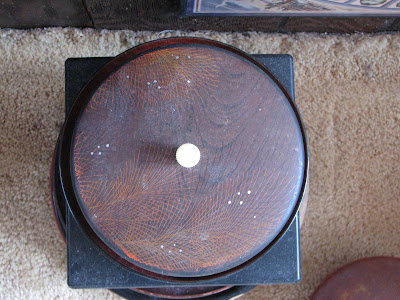 Perspective Exercise #4: Break Signals
Perspective Exercise #4: Break SignalsOver years I have noted that we each have little habits that indicate when we want to take a break. For me nail biting still exerts a reliable signal. Search for a signal. Our signature request to quit offers a language for rest. This process we are doing no longer fully engages us. Some part of us has decided not to play. A little attention focused here can redirect the flow of playfulness. Earlier I stopped reading as the frequency with which my fingers returned to my mouth increased. I always associated nail biting with transformed thumb sucking. The thumb sucking served its own construction of self-comfort. Could I ignore feelings; while my hands spoke a different language? I can now translate the language of my hands into being tired of doing this particular action. Am I asking to play a different game or am i simply asking for a break. With my finger posed at my lip, I decide to take a break from writing now. Remember for the sake of playing fully to interrupt the flow in the middle, in the middle of the page, in the middle of the behavior. See what is freed up.
When we return, do we engage more fully? This serves a worthwhile investment in our potential involvement. We intend to play from our energy source. In this kind of a break notice patterns in the fabric of play to which we have not attended. I return to the theme of hanging out and doing nothing where inner connections thread together seemingly unrelated ideas. This time out of getting more direct input represents a chance to value what already exists inside. We can do this by not directly attending to content.
Since time out serves as a nap or a rest, it also serves as a time to daydream. Daydreaming can help us attend to priorities and particularly notice personal balance. In a playful way we can attend to our dreaming and notice whether we use these thoughts for a game of comfort, or whether they signal a need for some other form of engagement. Notice whether in this daydream we repeat something and whether we attend to any new details. We can map our daydream content and add details as we create them. We may be able to find a pattern of the comfortable threads that leads us to a clear sense of why we need to take a break from what stands directly in the forefront of our attention. As with daydreaming, notice that some details make the experience much more satisfying.
 Perspective Exercise #5: Sleep Play
Perspective Exercise #5: Sleep PlayA note to the sleepless: consider daydreaming at night while we lie awake. Play a game with insomnia. In a time out zone, we want to engage with something and everything tells us not now. Bring out favorite memories that haven’t gotten enough remembrance. Savor all the details we can recall. Try and find the smaller nuances of the event that made the experience special. Don’t stick to the story of the memory, try and find details with all our senses. Rest while we let our mind attend to the pleasant memory. Nighttime daydreaming takes a different direction out of a rigid duality. We play with sleep and wakefulness; we rest.

No comments:
Post a Comment